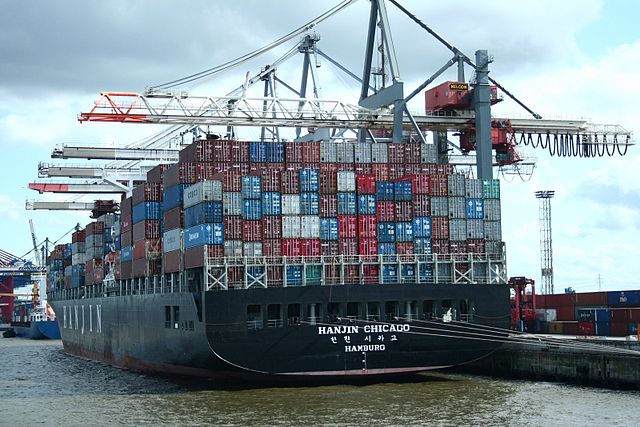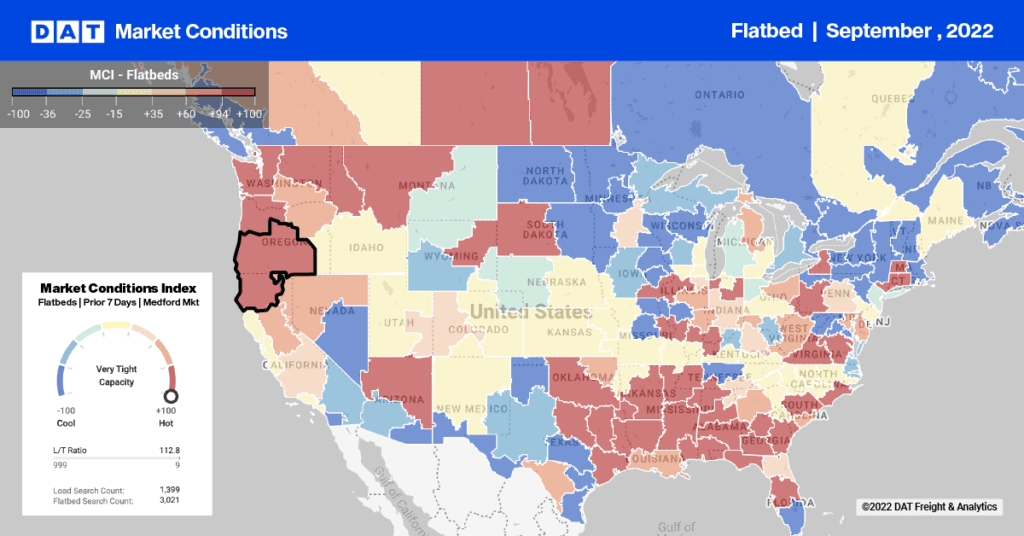I’d advise shippers not to get complacent about transportation costs. The recent bankruptcy of Hanjin Shipping combined with extreme U.S. weather may impact both the spot and contract markets in the next several weeks. Here’s what we’re seeing:
Lessons from Hanjin
If capacity isn’t nourished, it can disappear. The ocean freight industry suddenly lost one of the top ten players when Hanjin Shipping Co. filed for bankruptcy on August 31.

Photo by Oliver Ohm
Hanjin’s exit strands 89 ships worldwide containing some $14 billion worth of cargo, much of which was headed to the U.S. and Europe for the winter holiday season. No doubt this will complicate efforts to get products from Asia to U.S. retailers’ shelves before Black Friday. One possible outcome could be a surge in demand — and rates — for trucks, possibly beginning in the next few weeks. Missed schedules could keep rates high well into November, when the holiday freight season would ordinarily start to wind down.
Weather Events, at Home and Abroad
We have seen disruption in the U.S. recently due to flooding in Louisiana and Texas, as well as a hurricane in the Florida panhandle. Far from our shores, China is currently dealing with Typhoon Meranti which has the potential to add even more time to the export process, especially through the Port of Xiamen, China’s eighth-largest container port. According to one CNN report: “When it made landfall over mainland China, the storm’s maximum sustained winds were 145 MPH with gusts up to 175 MPH.” I’m sure we will learn of Meranti’s devastating effects in the coming days. In addition to the profound — and sometimes tragic — impact of these storms on local residents, major weather events often cause delays and frustrations for supply chain managers.
The Hanjin bankruptcy and the Chinese typhoon will cause some measure of disruption and delay to imported freight for the holidays, making California ports busier than usual, at a later point in the season. That means higher volumes, and likely higher freight rates, just when weather starts to turn ugly.
Huge Harvests Expected for Apples, Onions, Potatoes
I track produce trends, since these have some variability from year to year, and the unpredictable demand often has a big influence on spot market trends. We are several years into the California drought, which has reduced yields from the Central Valley, but other parts of the U.S. have been more fortunate this year. The Michigan apple crop escaped late frosts and is now projected to achieve a near-record harvest. Crops are also strong in nearby Wisconsin and Minnesota, despite flooding in the Red River Valley.
Further West, Colorado, Utah, and Idaho all appear to be on track for onions and potatoes. The Pacific Northwest also has a strong harvest of tree fruit. All this portends the absorption of some of the excess refrigerated capacity that has been competing for van freight this year. Refrigerated loads tend to be long hauls.
All of this seasonal freight and supply chain disruption could drive rates out of the ‘complacency’ zone. I know I’ll be keeping a close watch on how this plays out, and I suggest you do the same.
Track changes in spot market freight rates with DAT RateView, which offers real-time spot market and current contract rates, based on more than $28 billion in actual transactions.


